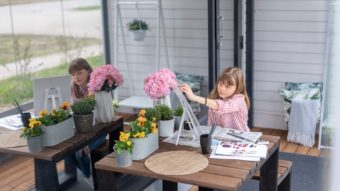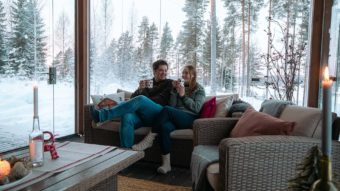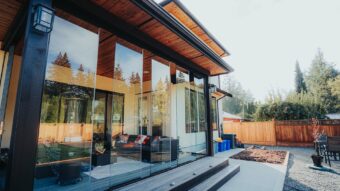
Sustainable sunrooms! Carbon footprint paid back in 3 years
Many of us pay close attention to environmental issues and for example our environmental footprint when making purchases. Sometimes, decisions are based on which solution has the least environmental impact.
However, it is not always easy to recognize what is environmentally friendly and what is not. In this blog post we will tell you about measuring the environmental impact of your retractable sunroom, and how you can make an impact! For example, did you know that the environmental footprint of your retractable room is paid back in three years? Or that Lumon’s rooms are made 95% of glass and aluminum, which are easy materials to recycle?
Glass produced from sand is easy to recycle
The most used material in the making of your sunroom is glass. What is glass made of, and what kind of environmental footprint is left from it?
Glass is made mostly of silica sand, which is also known as quartz sand. When quartz sand is heated, it melts and can easily be molded. Upon cooling, it forms into its transparent solid state. In addition to quartz sand, sodium and calcium carbonate are added, and depending on intended use, other substances may also be added.
Glass recycling has been made very easy, and Lumon takes great pride in the recycling of used materials, whether it be leftover glass from production processes or otherwise.
Aluminum can endlessly be reused for various purposes
In addition to glass, the structural elements of Lumon’s rooms are made of aluminum. Aluminum is the third most common element found in the earth’s crust, and is extracted from bauxite. Aluminum is light-weight and easily molded. It can also endlessly be used without any major impact to its quality. That being said, leftover aluminum from production processes as well as aluminum components from sunroom structures which have come to the end of their life cycle can be reused. Similar to glass, ‘leftover’ aluminum is recycled or reused almost 100%.
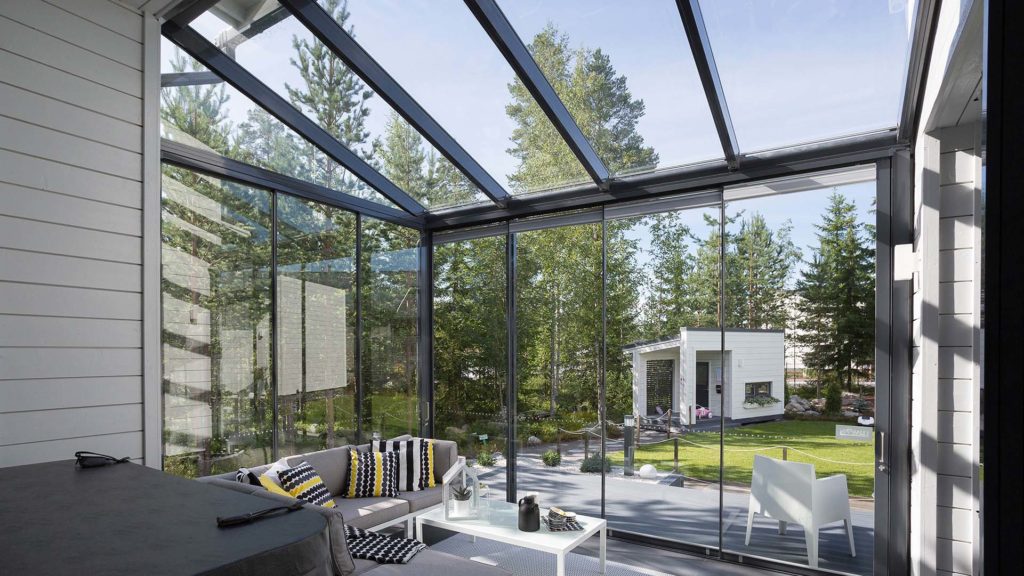
Here’s how logistics and installation minimize the use of environmental resources
As you most likely are aware, the environmental impact of Lumon’s product is not limited to production processes. In addition, transport, packing and elements associated with use are to be considered, if sustainability is to holistically be considered.
Lumon’s product in Canada is produced at Canada’s own glass fabrication line, and materials are sourced from Canada. Installation is always completed by Lumon’s own local installers, so that kilometre’s associated with driving are minimized. We also pay close attention to the fact that packing materials are properly recycled.
For transport, the glass panels are stacked on top of special palettes, where softening elements are added between the panels to support them on top of each other. At the end, the package is wrapped in plastic for transport. When the glazing arrives at its final destination, Lumon returns the palettes and reusable materials. Up to a fourth is saved in packaging material resources with this system, rather than disposing of all material associated with the packaging of the glazing.
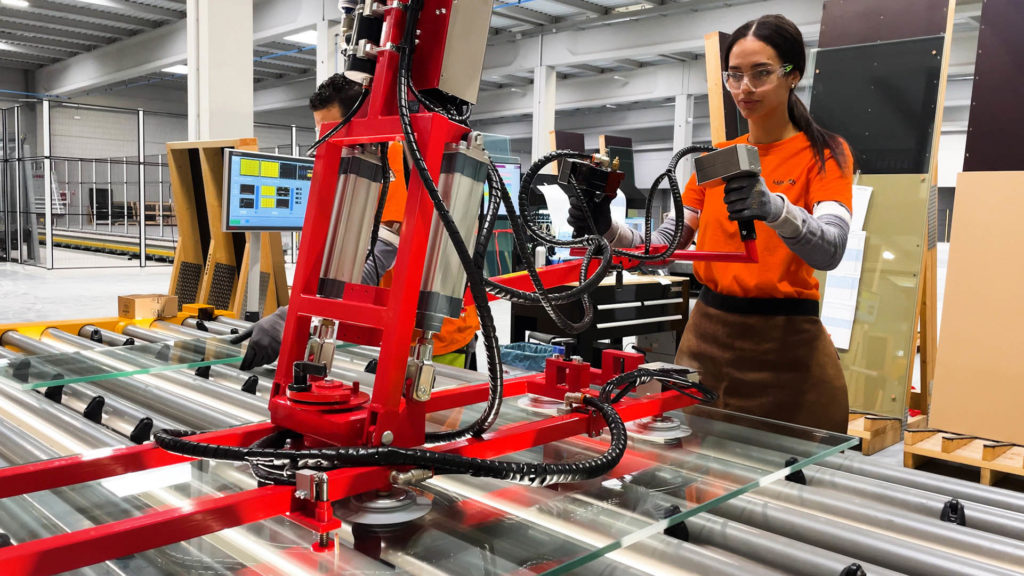
An informed user continues the environmental friendliness of Lumon’s product
Overall, the carbon emissions of one sunroom correspond to about 1 000 kilometres of driving with a car. Because the sunroom glazing positively impacts energy usage and reduces heating costs, for example, the room pays back its environmental footprint as quickly as three years.
Lumon has designed its systems to be durable. You can also trust that your sunroom will bring joy to your home for decades. With maintaining your space, you also ensure that the room stays in good condition! Check out tips for cleaning your sunroom here.
For heating your sunroom, an infrared is an environmentally friendly option. Infrared heaters direct heat at the specific spot where you spend time! A perfect solution for autumn and winter months. In addition, recycled textiles or furniture can be used in decorating your revamped outdoor space.
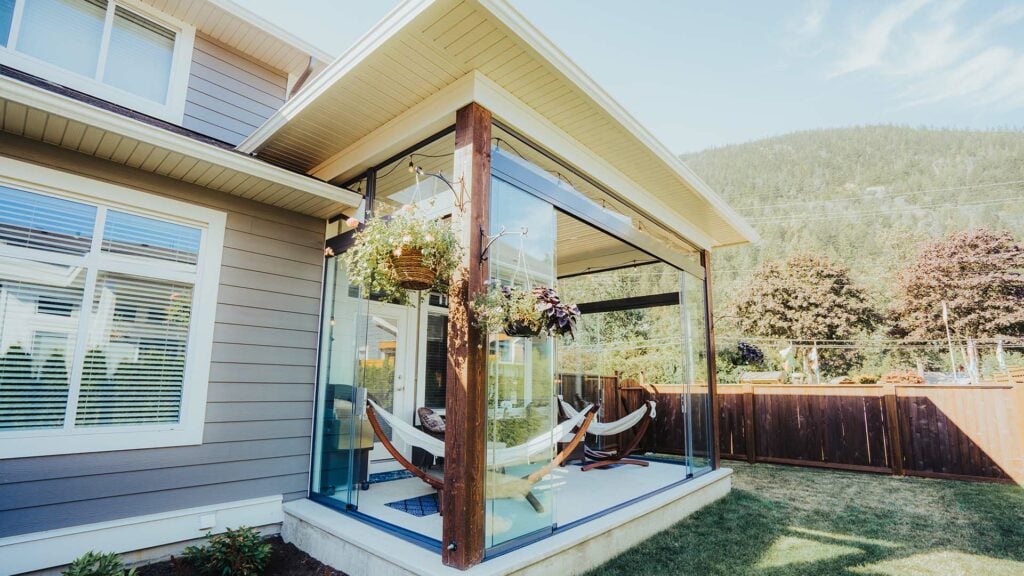
An environmentally friendly outdoor space – let’s make it happen!
Do you want to improve your outdoor living space and make your home more environmentally efficient at the same time? Are you desiring to make sustainable investments? As for you, environmental friendliness is close to our hearts, and we help you choose a product that supports that!
The first step is to get a free consultation from one of our professional Design Consultants. Receive tips and facts, on the basis of which you can choose the right product for your home!
You might also be interested in..
-
Lumon Journey: From Outdoor Space to Outdoor Room
Read more…Discover how to transform your outdoor space into a personalized retreat with our outdoor living rooms.
-
How to Maximize Sunlight with a Retractable Glass Wall in Winter?
Read more…One of the benefits of seamless retractable glazing is that you do not need to worry about compromising on making the most of daylight.
-
Retractable or Sliding Glass Walls for Patio: Which is Right for My Home?
Read more…There are two options to choose from when deciding how you wish the Lumon Glazing to work: sliding (LGS) or retracting (LGR). Both options are frameless, giving a clear and unobstructed view of the outdoors.
